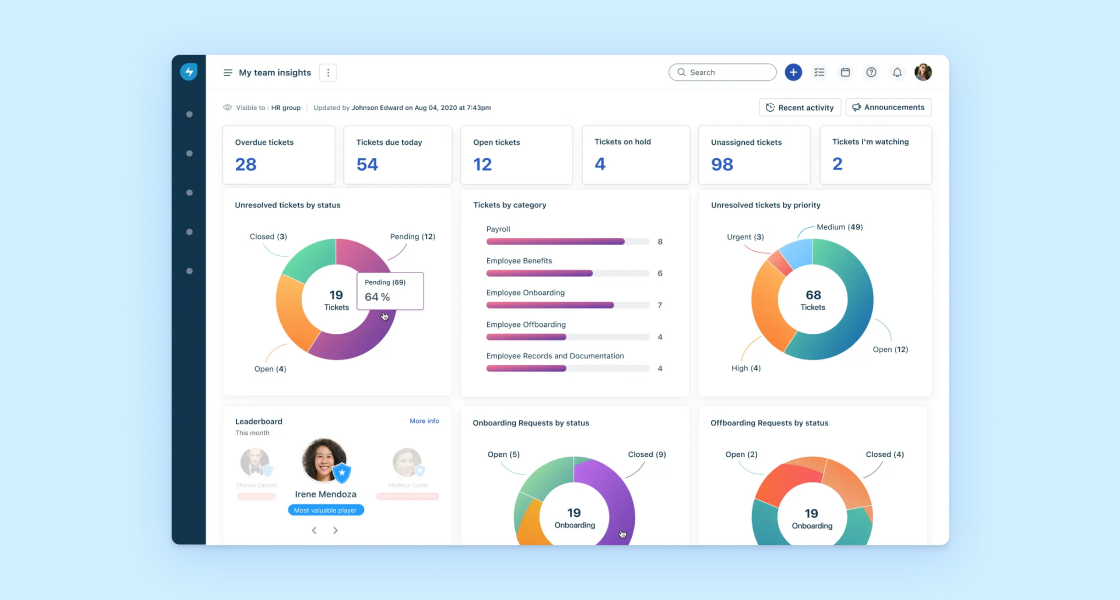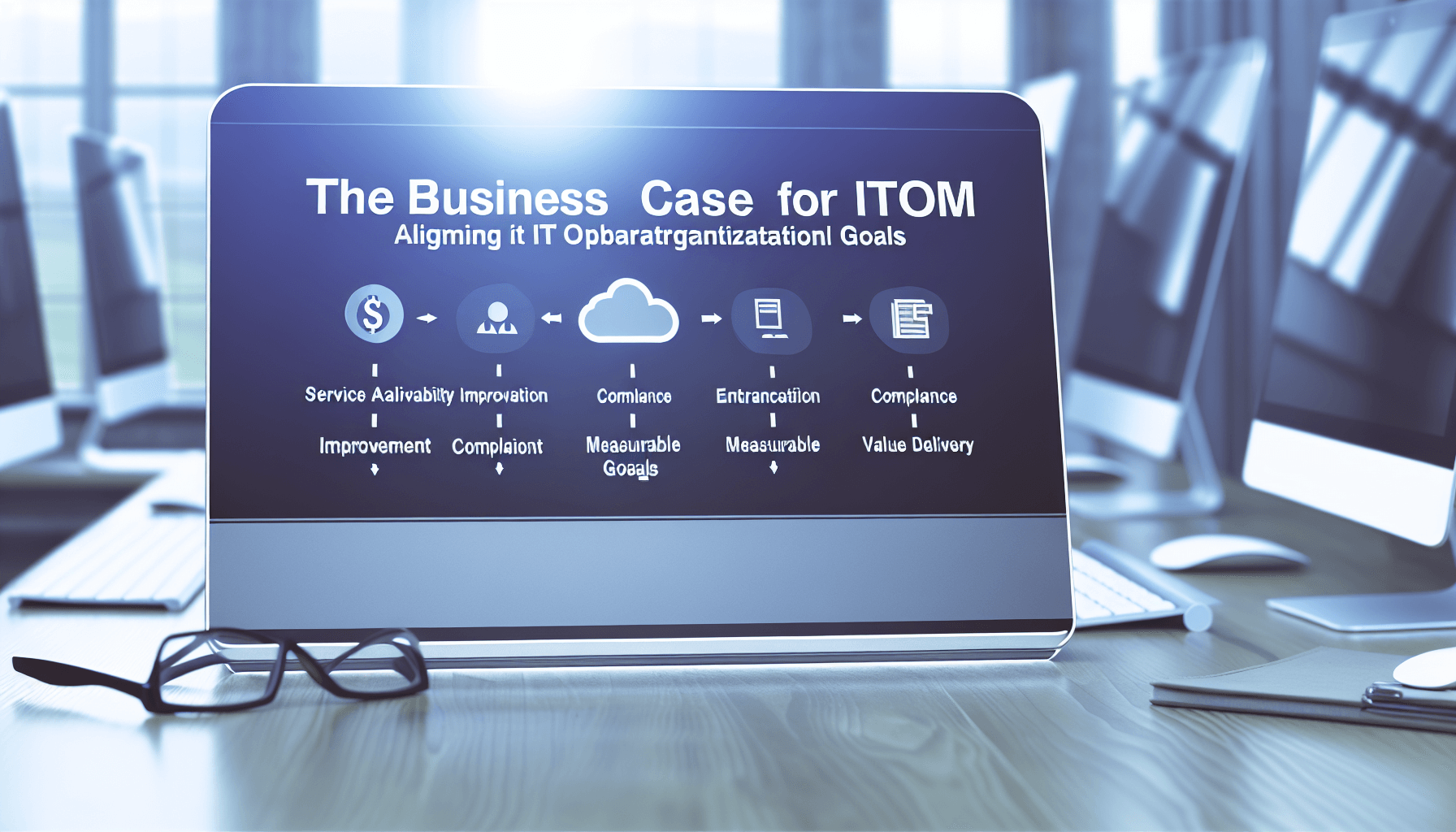Unifying IT and Development with Freshservice: How to get frictionless collaboration

In today’s fast-paced digital transformation landscape, collaboration between IT and development teams is no longer a luxury, it’s a necessity. But let’s be honest: in many organizations, disconnection still prevails. While IT support operates under a rigid ticketing system, developers move at full speed down parallel tracks. The result? Silos that hinder innovation, extend response times, and complicate growth.
This is where Freshservice comes in. Far more than just an ITSM platform, Freshservice acts as a smart bridge between the structured world of IT operations and the agile realm of DevOps. With powerful integrations and customizable workflows, it enables organizations to align efforts, enhance collaboration, and accelerate software delivery with confidence and efficiency.
In this article, you’ll discover how Freshservice can become a key ally in building a true DevOps culture. We’ll explore workflow ideas and best practices that help your teams work more connected, agile, and transparent.
Why DevOps Needs Modern ITSM Solutions
DevOps aims to break down barriers between development and operations, but without the right tools, chaos can ensue. Classic ITSM often gets a bad rap for being too rigid, but a modern, cloud-based platform like Freshservice strikes a balance between control and agility.
- Shared Responsibility: DevOps is about both teams sharing responsibility for software delivery, uptime, and quality.
- Traceable Change: Regulatory requirements and uptime SLA’s demand clear tracking of changes, incidents, and responses, without stifling innovation.
Freshservice addresses these pain points by providing a flexible yet robust platform that integrates ITSM for DevOps practices.
Key Freshservice Features for DevOps Collaboration
Freshservice is much more than an IT ticketing system. Here are the core capabilities that make it a powerful DevOps collaboration tool:
- Change Management Tailored for Agile: Customize approval workflows, automate change reviews, and integrate with CI/CD tools to manage releases safely without slowing down development.
- Incident and Problem Management: Link incidents directly to code deployments or infrastructure updates, streamlining investigation and resolution. Incorporate root cause analysis to drive continuous improvement.
- Service Catalog and Automation: Reduce friction with a self-service portal that automates common requests and standardizes provisioning of resources for developers and IT teams alike.
- Native Integrations: Freshservice supports native integrations with popular DevOps platforms including Jira, GitHub, GitLab, Slack, Microsoft Teams, and many more, keeping work in sync and communication in context.
- Custom Workflows and Orchestration: Build multi-step automations that connect incidents, releases, or assets to custom scripts, approval chains, 3rd-party notifications, or cloud automation pipelines.
- Unified Asset and Configuration Management: Bring visibility to all infrastructure, from on-prem servers to cloud-native microservices, and link changes or incidents to specific assets and environments.
- Collaborative Knowledge Base: Maintain up-to-date troubleshooting guides, runbooks, and architecture documentation that can be searched and contributed to by both IT and development teams.
Example Workflows: Freshservice in Action for DevOps Teams
The real power of Freshservice lies in its ability to automate and orchestrate workflows that bridge teams and tools. Here are three concrete examples of how Freshservice enhances DevOps processes:
Automated Change Approvals for CI/CD Deployments
Continuous integration and continuous delivery (CI/CD) pipelines are at the heart of high-velocity software teams. But how do you ensure that necessary change controls aren’t bypassed as code is pushed to production?
- Developers merge code to the main branch in GitHub.
- A webhook triggers a deployment pipeline in Jenkins or GitLab CI.
- The pipeline calls the Freshservice API to create a Change Request with deployment details (commit hash, environment, associated tickets).
- Freshservice automatically routes the change to an approver, sending notifications via Slack or Teams.
- Once approved, the pipeline receives a webhook to continue, and all logs are attached to the Freshservice record.
- If issues occur, an Incident can be automatically created, linked back to the change for rapid troubleshooting.
This workflow combines auditability, speed, and transparency—ensuring both ITSM and DevOps needs are met.
Incident Management Integrated with Monitoring and Alerting Tools
Modern infrastructure monitoring tools (Datadog, New Relic, AWS CloudWatch) are crucial for identifying problems before users notice. With Freshservice DevOps integration:
- An alert indicating high error rates is triggered in Datadog.
- Through integration, a Freshservice Incident is created, enriched with logs and environment details.
- AI-based categorization suggests likely root causes, groups similar incidents, or proposes KB articles for faster triage.
- Development teams assigned to the affected microservice are automatically notified via their preferred messaging tool.
- Throughout resolution, updates are logged, stakeholders are kept informed, and post-mortems are linked for future learning.
This process reduces incident response time and ensures all relevant parties have the context to act quickly.
Self-Service Portal for Developer and IT Requests
Freshservice’s Service Catalog enables a unified self-service portal for both IT and development tasks, such as:
- Requesting provision of a QA environment or database instance
- Onboarding new developers with access to required repositories, cloud accounts, or monitoring tools
- Raising a security scan prior to deployment
- Triggering automated workflows (e.g., running an infrastructure-as-code script to deploy a sandbox)
- Submitting requests for feature flags, SSL certificate renewals, or load balancer changes
Automated fulfillment, approval routing, and transparent status tracking empower teams to move faster and reduce back-and-forth emails.
Best Practices for Using Freshservice as an Agile IT Service Management Platform
Transitioning to an agile ITSM model powered by Freshservice doesn’t happen overnight. Here’s how to make the most of your investment:
- Map Existing Processes and Pain Points: Gather input from IT, developers, and security teams to understand current bottlenecks and where automation or integration can best add value.
- Start Small, Iterate Fast: Pilot Freshservice workflows with a single product squad or critical incident category, then refine based on feedback before scaling across more teams.
- Standardize Request Types and Templates: Use service catalogs and custom forms to capture the right data up front, minimizing delays from incomplete tickets.
- Automate Routine, Humanize Complex: Free up time by automating routine approvals, notifications, and assignments, so analysts and SREs focus on complex troubleshooting and innovation.
- Foster a Blameless Culture: Link post-incident reviews (PIRs) and knowledge base articles to Freshservice tickets for shared learning, not finger-pointing.
- Leverage Integration Ecosystem: Continuously add integrations with your stack (CI/CD, monitoring, chat, CMDB, cloud providers) to adapt as workflows evolve.
- Measure and Improve: Use native analytics to track KPIs like mean time to recovery (MTTR), change failure rate, or ticket resolution times to continuously optimize.
Building a DevOps-Ready Freshservice Workflow: Step-by-Step Guide
Ready to get started? Here’s a high-level checklist for deploying Freshservice as your DevOps collaboration tool:
- Connect Relevant Tools: Set up integrations with code repositories, deployment pipelines, monitoring and alerting tools, chat platforms, and identity providers.
- Design Change Management for Cloud Native: Create custom change templates for infrastructure-as-code deployments, database migrations, or production rollouts, each with tailored approval flows.
- Enable Automated Incident Enrichment: Map fields from monitoring tools into Freshservice incidents, automatically attaching logs, traces, or environment metadata.
- Create Role-Based Portals: Customize the Freshservice self-service portal to offer different request types for developers, IT, QA, and business users, based on roles and permissions.
- Build Knowledge Sharing Workflows: Design processes for publishing, reviewing, and updating knowledge base articles after each incident or major release.
- Alerting and Communication: Use webhooks and APIs for bi-directional updates between Freshservice and Slack, Teams, or email to keep everyone informed without context-switching.
- Secure and Audit: Use granular permissions, SAML SSO, and audit logs to ensure compliance and traceability, even as you increase automation and velocity.
Benefits of Freshservice DevOps Integration
By adopting Freshservice-powered DevOps collaboration, organizations can expect measurable advantages:
- Faster Deployments: Automated approvals and clear workflows mean code moves to production without waiting days for manual sign-offs.
- Improved Reliability: Linking incidents, assets, and change records makes it easier to find root causes and prevent repeat problems.
- Reduced Costs: Automation eliminates repetitive tasks, freeing IT and developer time for higher-value projects.
- Increased Transparency: Everyone involved—developers, SREs, support, and business stakeholders—can see what’s changing, when, and why.
- Enhanced Developer Experience: Self-service and clear status tracking reduce frustration and let engineers focus on innovation, not bureaucracy.
- Scalability: Workflows can be rapidly tweaked as the organization grows, without the overhead of custom code or complex scripting.
Measuring Success: Key DevOps Metrics with Freshservice
To gauge the impact of your agile IT service management transformation, Freshservice provides out-of-the-box and customizable analytics dashboards. Track these key DevOps collaboration metrics:
- Change Lead Time: The time from code commit to deployment approval – shorter times indicate greater agility.
- Mean Time to Recovery (MTTR): How quickly incidents are resolved—helping demonstrate reliability improvements.
- Deployment Frequency: How often code is shipped—fresh deployments signal a healthy collaboration pipeline.
- Change Failure Rate: The percent of changes causing incidents or rollbacks—lower rates showcase DevOps maturity.
- Incident to Root Cause Analysis Time: Speed in identifying and learning from production issues, critical for continuous improvement.
- User Satisfaction: Survey stakeholders to monitor satisfaction with ITSM for DevOps processes and overall developer experience.
How to avoid common mistakes
While the benefits are clear, successful integration of DevOps and ITSM via Freshservice requires attention to pitfalls:
- Over-customization: Avoid building overly complex workflows that replicate legacy processes and slow down agility—iterate and keep it simple.
- Siloed Configuration: Bring IT, developers, and security into the design process from day one; don’t let one group dictate workflows in a vacuum.
- Poor Change Communication: Always leverage multi-channel notifications so stakeholders aren’t blindsided by deployments or outages.
- Lack of Buy-in: Provide training, highlight quick wins, and continually share success stories to foster adoption across team boundaries.
- Neglecting Post-Incident Reviews: Always link learning and documentation to Freshservice tickets for lasting improvement.
Bridging the Gap: Realizing True DevOps Culture with Freshservice
Adopting agile IT service management and fostering smooth collaboration with DevOps doesn’t have to be a complex or overwhelming process. In fact, with the right tool, it can be the first step toward a more efficient, resilient, and value-driven operation.
Freshservice delivers exactly that: a modern, scalable, cloud-based platform designed for IT teams facing growing demands and increasingly fast-paced change cycles. Its unified approach enables workflow integration, task automation, system connectivity, and the creation of a true culture of collaboration between operations and development.
In an environment where agility, reliability, and innovation define competitive advantage, organizations that succeed in breaking down silos and accelerating technology delivery are already one step ahead. The future doesn’t belong to the biggest teams, it belongs to those who collaborate best.
Ready to get started? Book a personalized demo with our experts and discover how Freshservice can help you transform IT management in your organization.















